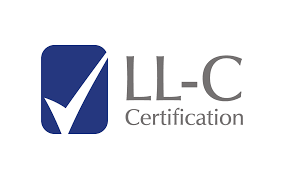SPAE (SCHOOL BULLYING PREVENTION SYSTEM)
EUROPEAN UNION Transparency Registry: 901347821561-55 Generalitat de Catalunya Transparency Registry: ENT011INSC170110170153
A certification is recognition of a job well done.
Entities certified in an anti-bullying system are a practical example of how to successfully implement policies, procedures and systems to prevent, manage and mitigate bullying at school.
Certification is a deposit of trust, and is a public commitment to fight bullying.
What do we want?
We intend a commitment to the educational community. We want prevention policies to be applied.
We want attitudes towards bullying to change, to move from concealment to positive actions.
We want to generate confidence in the students, in the teachers, in the families of the students and in the social environment where the educational activity takes place.
Having certified educational centers makes them a reference for the rest of the educational community.
IMPORTANT NOTE: INTERCER HAS DEVELOPED A MANUAL OF GOOD PRACTICES IN THE MANAGEMENT OF THE SCHOOL BULLYING PREVENTION MODEL, WHICH ALLOWS IMPLEMENTATION CONSULTANCY, DESIGNED FOR EXPERT CONSULTANTS OR FOR EDUCATIONAL INSTITUTIONS THEMSELVES
Note: INTERCER does not carry out consulting activities
PREVENTION STANDARD
Standar Structure
This is not a model that seeks certification, it is a model that aims to be a guide to define the minimum to be taken into account by a School Education center to prevent bullying, and to structure a management system that allows prevention and the performance provided.
The operation of this model is very simple:
The model structures the minimums to be taken into account and is in itself an example of how to develop an anti-bullying system.
The Education Centers that use it, have the freedom to structure it as they see fit (according to resources, staff, students, legislation and whatever factors affect it), and adapt it to their particularities and organization.
The model contains the basic requirements to be met for the development of a bullying management and prevention system, as well as recommendations, audit rules and the certification process.
This is an open model, that is, it can be improved and evolved based on day-to-day practices. For this, the opinion of users is important.
The opinion of the educational community is the essential referent for improving the management of this model.
There is an example Manual of the formats and documents proposed for the development of this model. They are only suggestions and guides to facilitate implementation in educational centers.
This certification can be integrated with others such as ISO 9001, ISO 14001, etc. - This certification certifies the educational center as an Entity that focuses on respect for the person.
This Model is structured by requirements (which are the criteria on which the implementation of a bullying prevention management system must be based)
STANDARD REQUIREMENTS:
Note: the key elements of the requirements to be met are presented below, not their development.
I.- The policy and values of the educational center must be defined and published.
II.- The indicators must be defined to help detect cases in which a student is subjected to bullying
III.- An organization chart of the educational center must be defined, and the person responsible for managing the bullying system must be identified.
IV.- The confidentiality of the entire management process must be ensured.
V.- The members who evaluate the situation of bullying should be defined if it appears
VI.- The rules of coexistence of the center must be defined and published towards the students, and ensure that they are informed (through brochures, meetings, publications, etc.).
VII.- A Coexistence Plan must be defined.
VIII.- An action protocol must be defined.
Our mission is to provide innovative solutions and tailor-made services that enhance and secure international trade, while offering added value to our clients.



Certification, inspection and audit solutions focused on business optimization.
CONFIDENCE
SECURITY
FLEXIBILITY
NOTE: THIS WEBSITE DOES NOT USE COOKIES OR ANY MEANS OF VISITOR CONTROL.
244 Fifth Avenue, Suite 1203, New York, NY 10001 US





